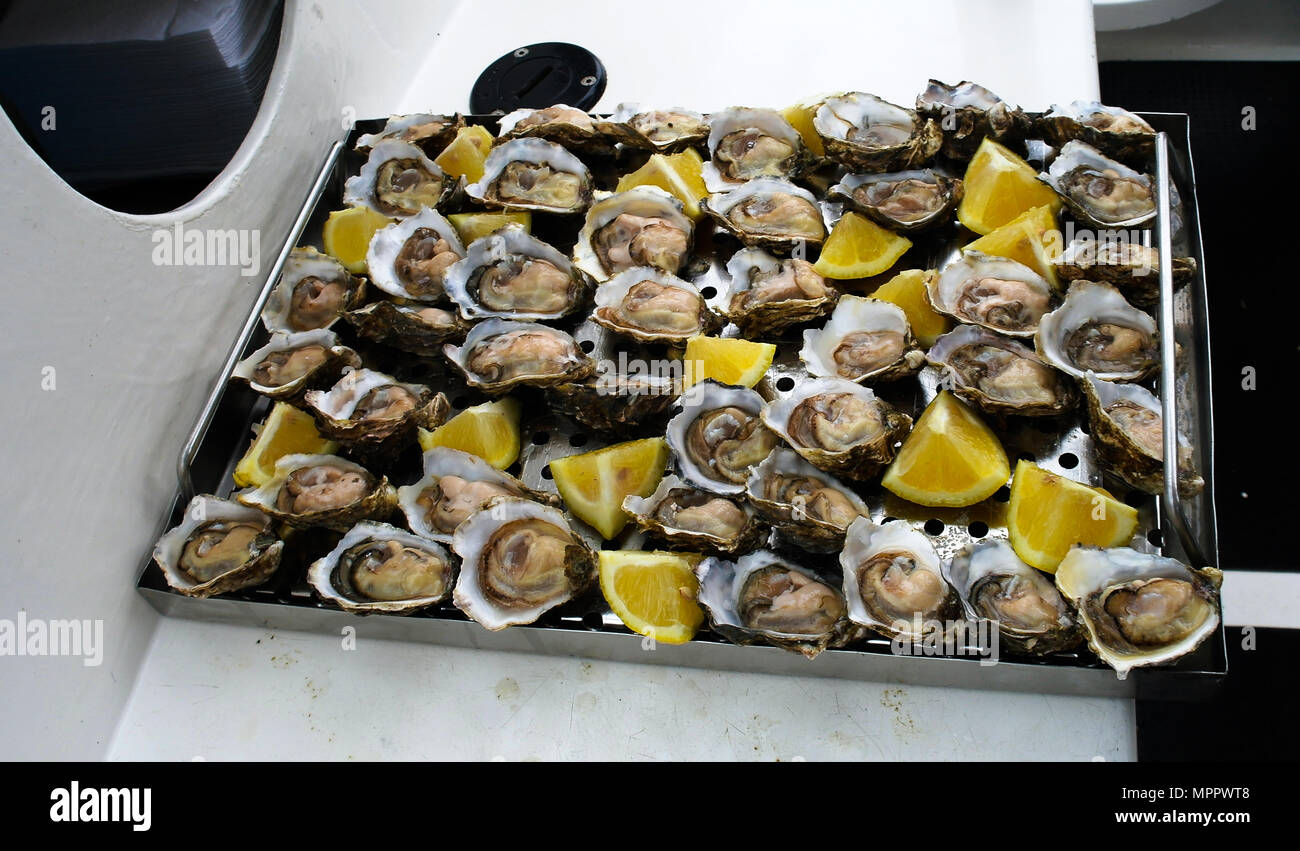

Worldwide annual production of Pacific oyster is around 660 000 tonnes.

There are no oyster farms in the Knysna lagoon. A small government-funded facility in the Keiskamma estuary is the only oyster farm in an estuary in South Africa. The majority of oyster production is undertaken in marine bays such as Nelson Mandela Bay near Port Elizabeth and Saldanha Bay on the West Coast. Oysters filter-feed on plankton in the water, are regularly inspected and graded for size and after harvest, conditioned in tanks of fresh seawater before graded again, packed and shipped via a cold chain. Seed oysters are grown out in offshore systems based in sheltered bays.

Spat - seed oysters or baby oysters - is imported from Chile, Europe, the US and Namibia, but some seed oysters are produced in Kleinzee in the Northern Cape. In the oyster rack system, oyster bags are attached to racks fixed onto support structures, thus exposing oysters at low tide. It is reported to have less environmental impacts compared to other oyster production methods such as raft and rack culture. Long-line culture has become the most common method used for farming oysters in South Africa. © Knysna Oyster CompanyIn South Africa, most oysters are produced in floating long-line systems in the ocean.


 0 kommentar(er)
0 kommentar(er)
